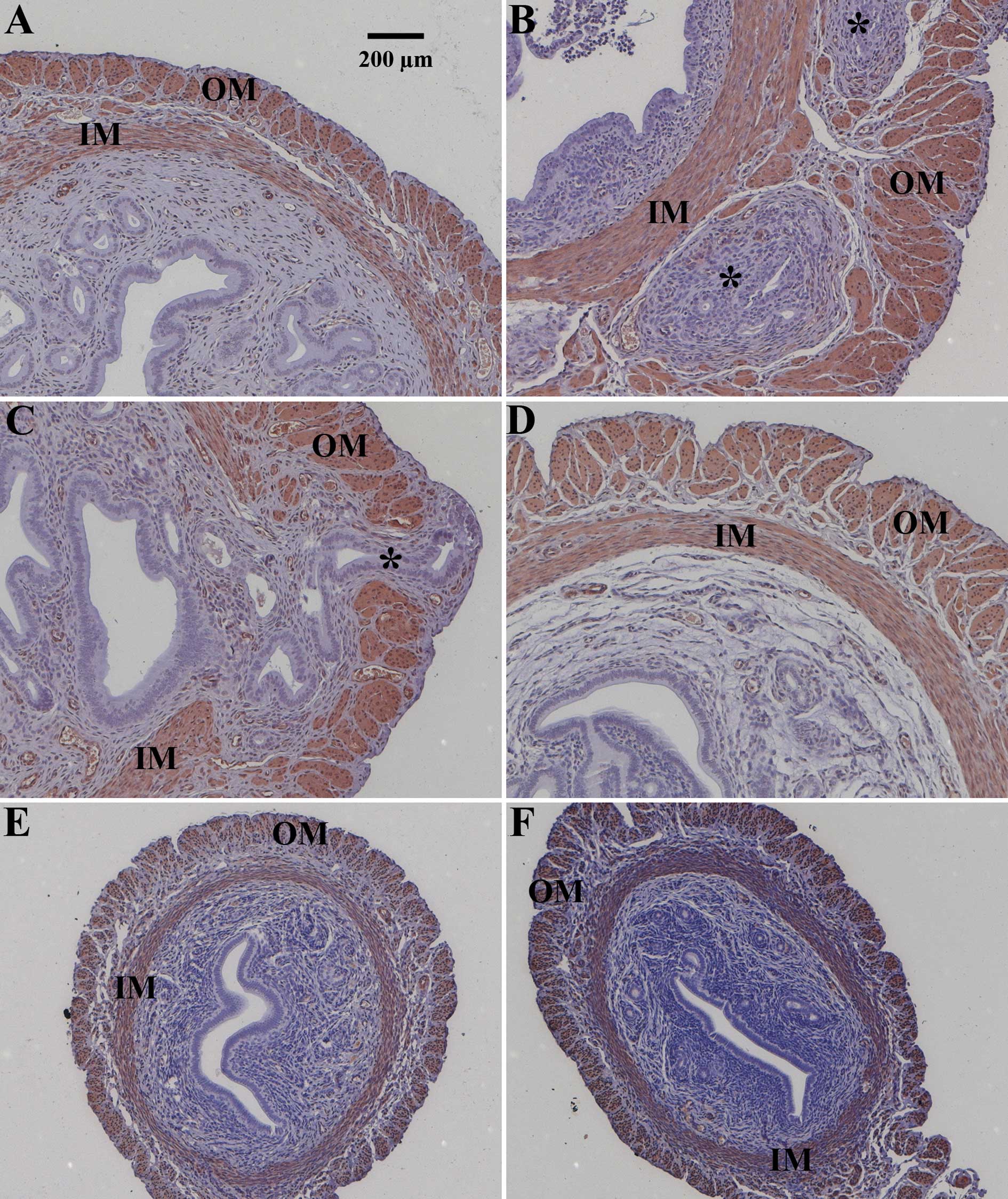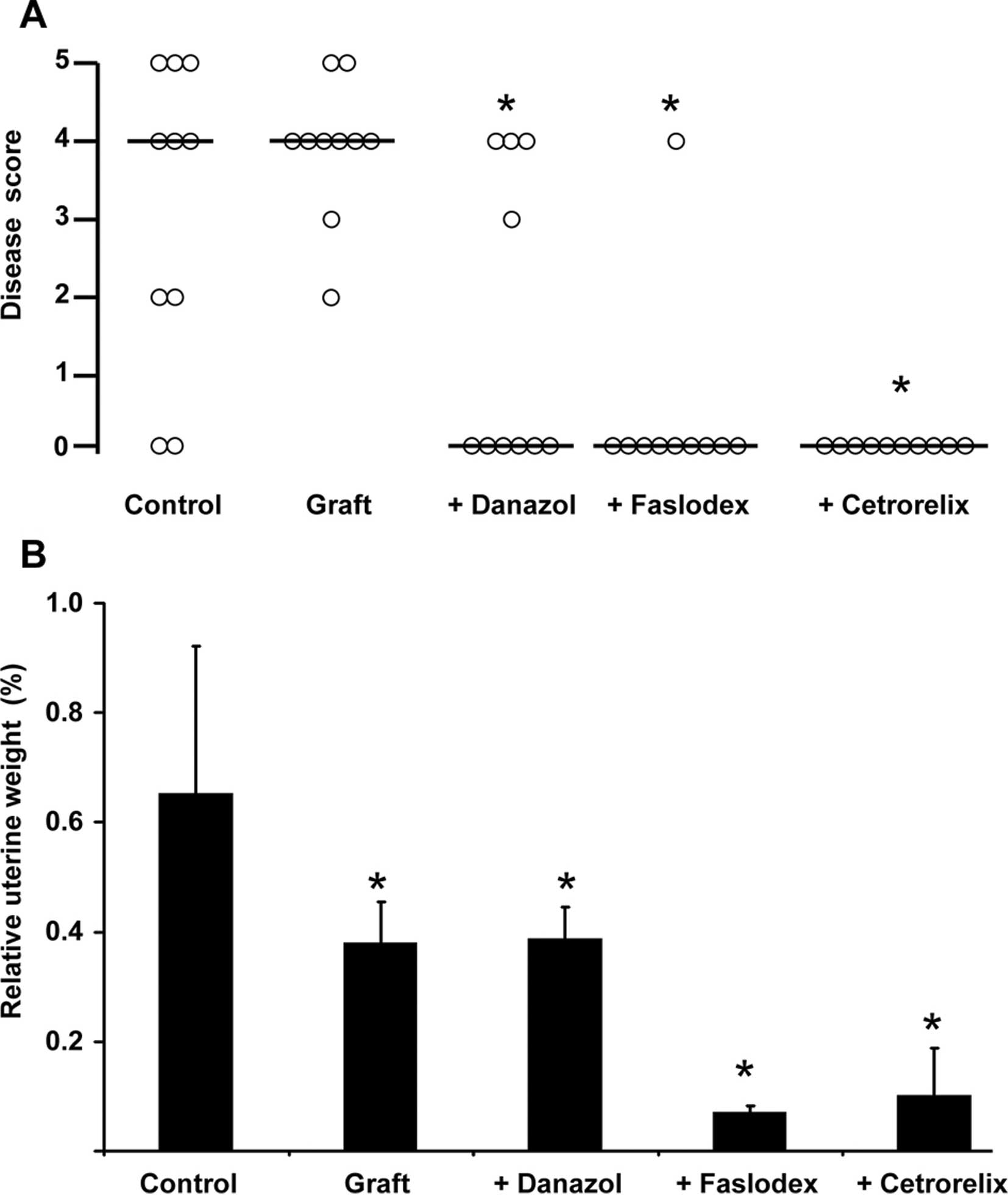|
1.
|
G LeyendeckerM HerbertzG KunzG
MallEndometriosis results from the dislocation of basal
endometriumHum
Reprod1727252736200210.1093/humrep/17.10.272512351554
|
|
2.
|
J KitawakiN KadoH IshiharaH KoshibaY
KitaokaH HonjoEndometriosis: the pathophysiology as an
estrogen-dependent diseaseJ Steroid Biochem Mol
Biol83149155200210.1016/S0960-0760(02)00260-112650711
|
|
3.
|
G HalisS MechsnerAD EbertDiagnosis and
treatment of deep infiltrating endometriosisDtsch Arztebl
Int1074464552010
|
|
4.
|
G BenagianoI BrosensS CarraraAdenomyosis:
new knowledge is generating new treatment strategiesWomens
Health5297311200919392615
|
|
5.
|
JA SampsonPeritoneal endometriosis due to
the menstrual dissemination of endometrial tissue into the
peritoneal cavityAm J Obstet Gynecol14422469192719969738
|
|
6.
|
G LeyendeckerL WildtG MallThe
pathophysiology of endometriosis and adenomyosis: tissue injury and
repairArch Gynecol
Obstet280529538200910.1007/s00404-009-1191-019644696
|
|
7.
|
L FedeleE SomiglianaG FrontinoL BenagliaP
ViganoNew drugs in development for the treatment of
endometriosisExpert Opin Investig
Drugs1711871202200810.1517/13543784.17.8.118718616415
|
|
8.
|
L StoryS KennedyAnimal studies in
endometriosis: a reviewILAR
J45132138200410.1093/ilar.45.2.13215111732
|
|
9.
|
I Tirado-GonzalezG BarrientosN
TariverdianPC ArckMG GarciaBF KlappSM BloisEndometriosis research:
animal models for the study of a complex diseaseJ Reprod
Immunol86141147201010.1016/j.jri.2010.05.00120594597
|
|
10.
|
T MoriH NagasawaMechanism of development
of prolactin-induced adenomyosis in miceActa
Anat1164654198310.1159/0001457246858602
|
|
11.
|
AK RodgersT FalconeTreatment strategies
for endometriosisExpert Opin
Pharmacother9243255200810.1517/14656566.9.2.243
|
|
12.
|
T MoriM KyokuwaH NagasawaAnimal model of
uterine adenomyosis: induction of the lesion in rats by ectopic
pituitary isograftingLab Anim Sci48646819989517893
|
|
13.
|
OJ DunnMultiple comparisons using rank
sumsTechnometrics6241252196410.1080/00401706.1964.10490181
|
|
14.
|
CW DunnettA multiple comparison procedure
for comparing several treatments with a controlJ Am Statist
Assoc5010961121195510.1080/01621459.1955.10501294
|
|
15.
|
T SingtripopT MoriK ShiraishiMK ParkS
KawashimaAge-related changes in gonadotrophin, prolactin and growth
hormone levels with reference to the development of uterine
adenomyosis in female SHN miceIn Vivo714715019938364165
|
|
16.
|
R HusebyMJ SoaresF TalamantesEctopic
pituitary grafts in mice: hormone levels, effects on fertility, and
the development of adenomyosis uteri, prolactinomas, and mammary
carcinomasEndocrinology11614401448198510.1210/endo-116-4-14403971922
|
|
17.
|
JF CouseMM YatesVR WalkerK
KorachCharacterization of the hypothalamic pituitary-gonadal axis
in estrogen receptor (ER) null mice reveals hypergonadism and
endocrine sex reversal in females lacking ERα but not ERβMol
Endocrinol1710391053200312624116
|
|
18.
|
SW GuoDL OliveTwo unsuccessful clinical
trials on endometriosis and a few lessons learnedGynecol Obstet
Invest642435200710.1159/00009841317202821
|
|
19.
|
T SingtripopT MoriS SakamotoS SassaMK
ParkS KawashimaSuppression of the development of uterine
adenomyosis by danazol treatment in miceLife
Sci5111191125199210.1016/0024-3205(92)90513-O1518375
|
|
20.
|
LC GiudiceLC
KaoEndometriosisLancet36417891799200410.1016/S0140-6736(04)17403-515541453
|
|
21.
|
R GruemmerAnimal models in endometriosis
researchHum Reprod
Update12641649200610.1093/humupd/dml02616775193
|
|
22.
|
T MoriT SingtripopS KawashimaAnimal model
of uterine adenomyosis: is prolactin a potent inducer of
adenomyosis in mice?Am J Obstet
Gynecol165232234199110.1016/0002-9378(91)90258-S1853904
|
|
23.
|
T MoriH NagasawaS TakahashiThe induction
of adenomyosis in mice by intrauterine pituitary isograftsLife
Sci2912771282198110.1016/0024-3205(81)90234-47300555
|
|
24.
|
P VercelliniE SomiglianaP VaganoA AbbiatiG
BarbaraPG CrosignaniEndometriosis – current therapies and new
pharmacological developmentsDrugs696496752009
|
|
25.
|
Z FangS YangJP LydonF DeMayoM TamuraB
GuratesSE BulunIntact progesterone receptors are essential to
counteract the proliferative effect of estradiol in a genetically
engineered mouse model of endometriosisFertil
Steril82673678200410.1016/j.fertnstert.2004.01.048
|
|
26.
|
SE BulunYH ChengP YinG ImirH UtsunomiyaE
AttarJ InnesKJ JulieProgesterone resistance in endometriosis: link
to failure to metabolize estradiolMol Cell
Endocrinol24894103200610.1016/j.mce.2005.11.04116406281
|
|
27.
|
L FedeleS BianchiG FrontinoHormonal
treatment for adenomyosisBest Pract Res Clin Obstet
Gynaecol22333339200810.1016/j.bpobgyn.2007.07.00617765017
|











